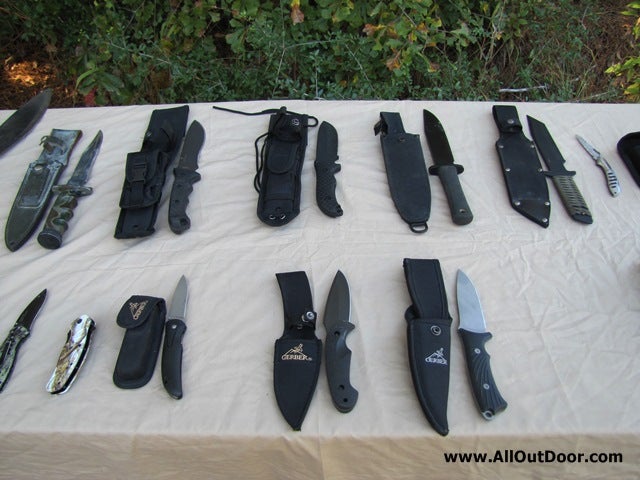What to Look for in a Good Skinning Knife
Kevin Felts 12.19.16

Hunting season is upon us, so let’s take a few minutes to talk about what makes a good skinning knife. Some people may believe any type of knife would make a good skinner. This is simply untrue.
There are certain types of knives that make good skinners, and there are certain types that make a bad skinning knife.
Rather than starting at “what to look for,” let’s start with “what to stay away from.” I feel this defines the criteria and is a good starting point.
What To Avoid
Heavy long blades – A heavy blade causes fatigue in the hand and wrist. A long blade does not allow for precise cuts. When skinning deer sized game or larger, we want to make fine cuts when separating hide from muscle.
The Bowie knife and Rambo survival knife are not good skinning knives. The longer and thicker the blade, the more difficult to becomes to make fine cuts.
Hard to sharpen and does not hold an edge – Stay away from low carbon stainless blades. An example of this would be 440 stainless. The blades do not hold an edge very well and are difficult to sharpen.
Having to sharpen a skinning knife in the middle of processing a deer is rather aggravating.
Multi-tools – Multi-tools are great, but they make a poor skinning knife. They have places for blood, hair, and meat to get into.
Serrated blades – Knives with a serrated blade are good for everyday carry, but they make for a poor skinning knife. The serrated edge pulls the meat rather than slicing through it. The blade fills with small pieces of meat and has to be wiped off.
Large blades on small game – Have a good pocket knife for rabbits and squirrels.
What Makes a Good Skinning Knife
Short thin light blade – For making precise cuts and reducing wrist and hand fatigue. A case pocket knife and a fillet knife are good examples.
High carbon steel blade – Does not have to be full carbon, can be stainless with a high carbon content. Must hold an edge and be easy to sharpen.
Easy to clean – Fixed blade knives, such as the Gerber Big Rock or a fillet knife are examples. Something that can be easily cleaned. Get the blood, hair and meat off the knife so you can go about your day. Soaking a knife in hydrogen peroxide for hours to get the dried blood out is a waste of time.
Smooth blade with a rounded tip – Something like a drop point blade with a good slicing edge. Tanto style knives are not good skinning knives. Stay away from knives with a serrated edge.
The straight edge of a tanto knife does not slice through the meat like what a drop point blade does. Having a curve on the blade improves how well the knife cuts. Tantos excel in stabbing rather than skinning
I have a Cold Steel GI Tanto and I like it. It has gone on several hiking and camping trips with me. It has a place in my knife collection, but not as a skinning knife.
My Favorite Skinning Knives
When I have to break out a knife and skin a deer, I reach for my Gerber Profile or my Gerber Big Rock.
The Gerber Profile holds an okay edge. If I go into a deer with the Profile sharpened, it usually has to be resharpened when I am finished.
The Gerber Big Rock seems to hold an edge better than the Profile. This pretty much my go-to knife for camping, backpacking or skinning a deer.
For small game such as squirrels or rabbits, I use a pocket knife. Using a large blade knife on small game is asking for trouble. It is too easy to slip and cut yourself by using a large knife on small game.